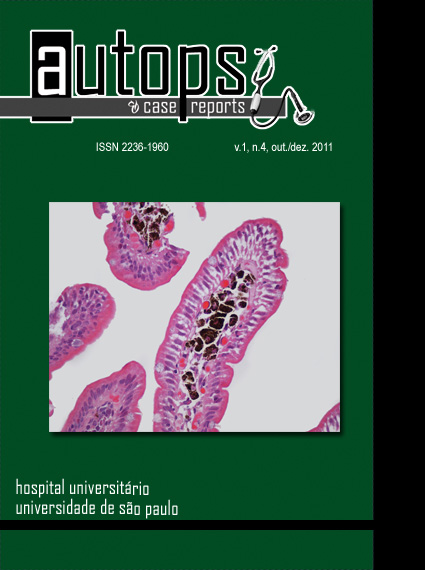Placental polyp: a rare cause of iron deficiency anemia
DOI:
https://doi.org/10.4322/acr.%25y.26076Keywords:
Iron deficiency, Anemia, Uterine hemorrhage, Placenta accreta, HysterectomyAbstract
Placental polyps are defined as pedunculated or polypoid fragments of placentaor ovular membranes retained for an indefinite period of time into the uterus after
abortion or child birth. An important cause of retention is placental accretism, an
abnormal adherence of the placenta into the uterine wall. Chronic cases are rarely
reported in the literature. In these cases, the placental retention in the immediate
postpartum is not followed by heavy bleeding what makes the diagnosis
challenging. We report a rare case of iron-deficiency anemia in a multiparous
29-year-old female patient two years after the last delivery. She sought medical
care with clinical symptoms of anemia and recent menses alterations. There
was no history of abortion. On gynecological examination, there was a twofold
enlarged uterus, and the pelvic ultrasound revealed an image compatible with an
endometrial polyp. She underwent open hysterectomy because of uncontrollable
bleeding followed by hypotension after curettage. The histolopathologic
examination revealed a partially hyalinized and necrotic placental polyp.
Downloads
Downloads
Published
2011-12-20
Issue
Section
Article / Clinical Case Report
License
Copyright
Authors of articles published by Autopsy and Case Report retain the copyright of their work without restrictions, licensing it under the Creative Commons Attribution License - CC-BY, which allows articles to be re-used and re-distributed without restriction, as long as the original work is correctly cited.
How to Cite
Campos, F. P. F. de, Simões, R. S., Felipe-Silva, A., Gonzales, M. D., & Ilário, E. N. (2011). Placental polyp: a rare cause of iron deficiency anemia. Autopsy and Case Reports, 1(4), 51-56. https://doi.org/10.4322/acr.%y.26076



